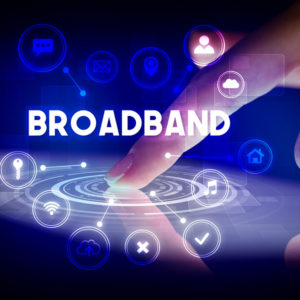When I started teaching at Stanford 25 years ago, none of my students had broadband off-campus, but they all called home on a landline voice phone. Now, broadband is pervasive, and the pandemic emphasized how much we rely on internet connectivity for work, school, healthcare and more.
But not all people have home internet for three reasons: it is not physically available to them; they cannot afford it (even with available low-income programs offered by providers); or they are not interested. New state and federal programs are designed to address the first two factors and can make affordable broadband as universal today as landline voice service was for my students in the late 1990s.
These government strategies rely on a two-pronged approach to be effective: (1) providing funding efficiently to deploy facilities to connect households in unserved and underserved areas; and (2) providing targeted funding to low-income households to ensure that they can afford broadband internet access.
In addition to the government programs, private companies have stepped up. To meet the needs of the streaming and work-from-home era, broadband providers have invested significant amounts in upgrading their networks to satisfy consumer demands, and they offer targeted low-cost services for low-income households. As a result, quality and speeds have increased dramatically, and prices have decreased substantially.
Even as providers have invested billions of dollars, consumer prices have decreased. The average price of 25 Mbps upstream/3 Mbps downstream service decreased by 15 percent from 2018 to 2022, while the overall U.S. consumer price index increased by 13 percent, meaning that the actual price of this broadband service decreased by almost 25 percent in four years.
Prices for higher speed services such as 250/25 Mbps and 1000/100 Mbps have decreased even more rapidly during the period, the latter down more than 30 percent in real terms. And these substantial price decreases occurred during a time with a significant increase in demand for broadband, partly because of the pandemic.
Why would prices come down when demand is increasing? One explanation is that competition is present and increasing. New facilities are being built, both wired and wireless, so consumers have more choice. Between 2015 and 2021, the number of census blocks nationwide served (at least in part) by fewer than two providers approximately halved, from 26 percent of all census blocks to 12 percent of all census blocks. And the average number of providers servicing each census block increased from just over two to just over three. 5G wireless providers like T-Mobile and Verizon combined with fixed wireless providers and now Starlink will help provide coverage in unserved areas and further increase competition in areas with existing service.
In addition to competition benefitting most consumers, many major internet providers have low-cost broadband options targeted at low-income households. My research has shown the effectiveness of such programs. These programs amplify government efforts like the Affordable Connectivity Program to make broadband free for eligible low-income families.
The government should continue to work with market participants to ensure continued access by households and investment by companies so that broadband is available and affordable to all and continues to be robust for future demand. The ACP is a smart way to use government funding and market forces — it targets low-income households without harming the incentives for providers to invest in their networks and offer low-cost plans. Congress should continue to fund the ACP so that low-income families can reap the benefits of broadband (as articulated in the 2010 National Broadband Plan).
We know this approach works and should stick with it. But some states risk veering off course. California is considering implementing flawed “affordability metrics” that, as my recent analysiswith Ofer Cohen shows, are not targeted at low-income households and, if used as a basis for public policies, may drag down broadband investment, innovation and adoption.
I hope the administration, Congress and the states will continue to use proven targeted subsidy programs that have worked well so that 25 years from now, lack of broadband will be as much a historical artifact as choosing a long-distance provider is today.


